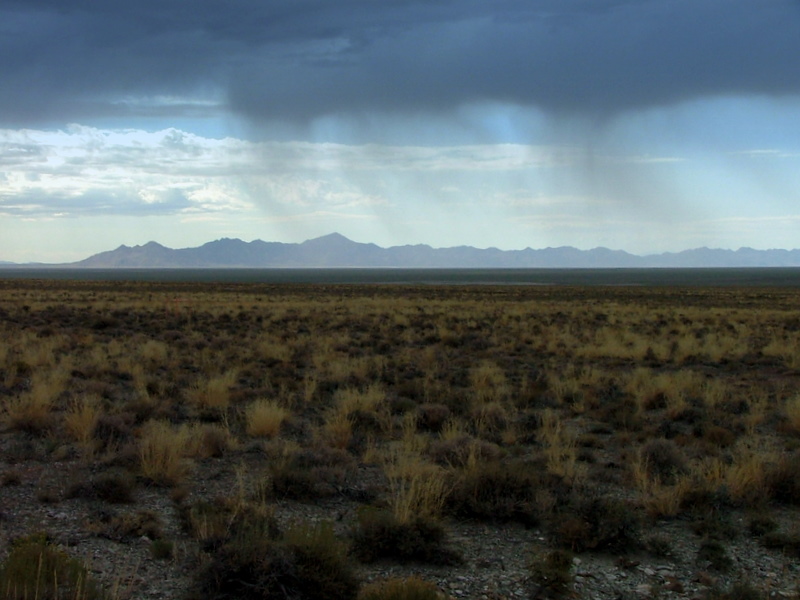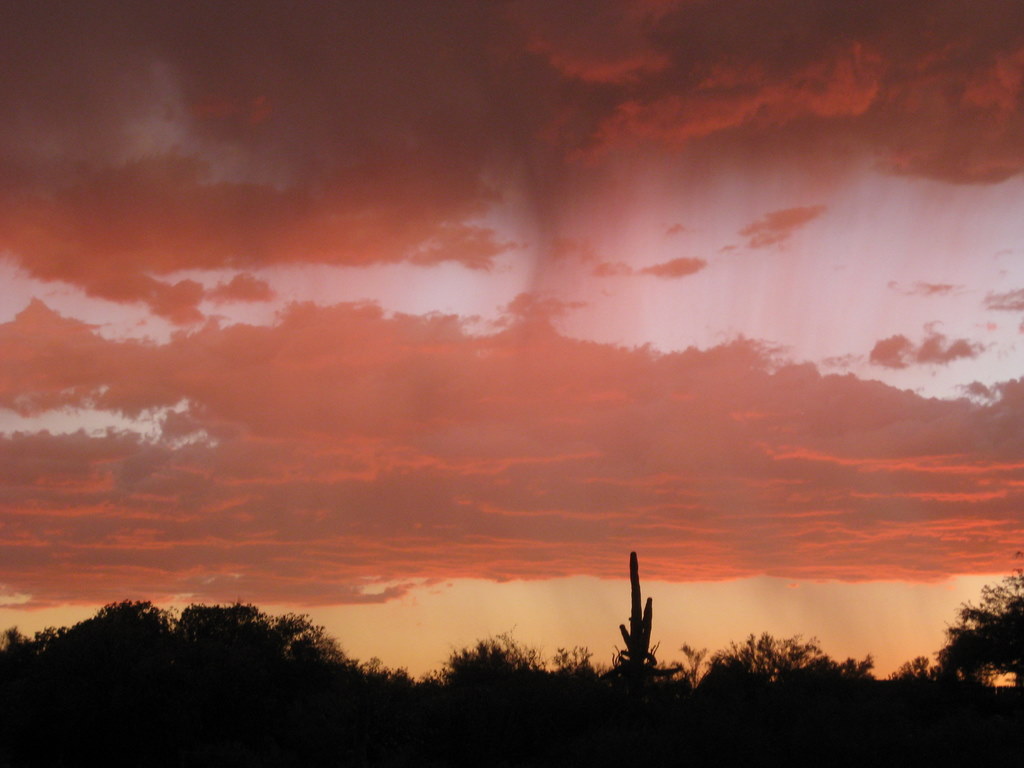
Courtesy & Copyright 2010 Kevin Connors
Below the bellies of these dark clouds you sometimes see grayish windswept curtains or streamers that do not reach the ground. Meteorologists call them “virga”, virga spelled with an “i”, from the Latin for “streak”. The word is absent from the prose of Mark Twain and the exploratory reports of John Wesley Powell because the word was only coined 70 years ago.

Courtesy & Copyright 2010 Jim Cane
These picturesque virga are descending precipitation. One might guess it to be rain, but most meteorologists agree that it is frozen precipitation which is melting and evaporating as it drops through our dry Utah air. Like a home swamp cooler, evaporation causes cooling which leads to the chilly downdrafts that accompany our summer thunderstorms. In the humid tropics, rains can be lukewarm, but our summer cloudbursts are goose-bump cold, owing to the same evaporation which yields virga.
Virga are a tease for parched summer landscapes, a herald of wild fires ignited by dry lightning, and a generator of dust storms as downdrafts scour dusty salt flats. But mostly, the curtains of precipitation that are virga are a fleetingly beautiful element of our western summer skies, well worth a pause and a picture, especially if you are lucky enough to see one accompanied by a rainbow or a fiery sunset.

Courtesy & Copyright 2010 Julio Betancourt
This is Linda Kervin for Bridgerland Audubon Society.
Credits:
Photos: Courtesy & Copyright 2010 Jim Cane
Courtesy & Copyright 2010 Julio Betancourt
Text: Jim Cane, Bridgerland Audubon Society
Additional Reading:
Jetstream, an online school for weather, NWS NOAA Southern Regional Headquarters, Ft worth, TX,
https://www.weather.gov/jetstream/atmos_intro

Courtesy & Copyright 2010 Julio Betancourt
Fire weather: a guide for application of meteorological information to forest fire control operations, Mark J. Schroeder and Charles C. Buck, USDA Forest Service, https://training.nwcg.gov/pre-courses/S390/FireWeatherHandbook
/pms_425_Fire_Wx_ch_01.pdf
The Book of clouds, John A. Day, Sterling, 2005, https://www.amazon.com/Book-Clouds-John-Day/dp/1402728131
Live Worldwide Network for Lightning and Thunderstorms in Real Time, Blitzortung, https://en.blitzortung.org/live_lightning_maps.php?map=30 [Broken link removed 1 Aug 2020]
